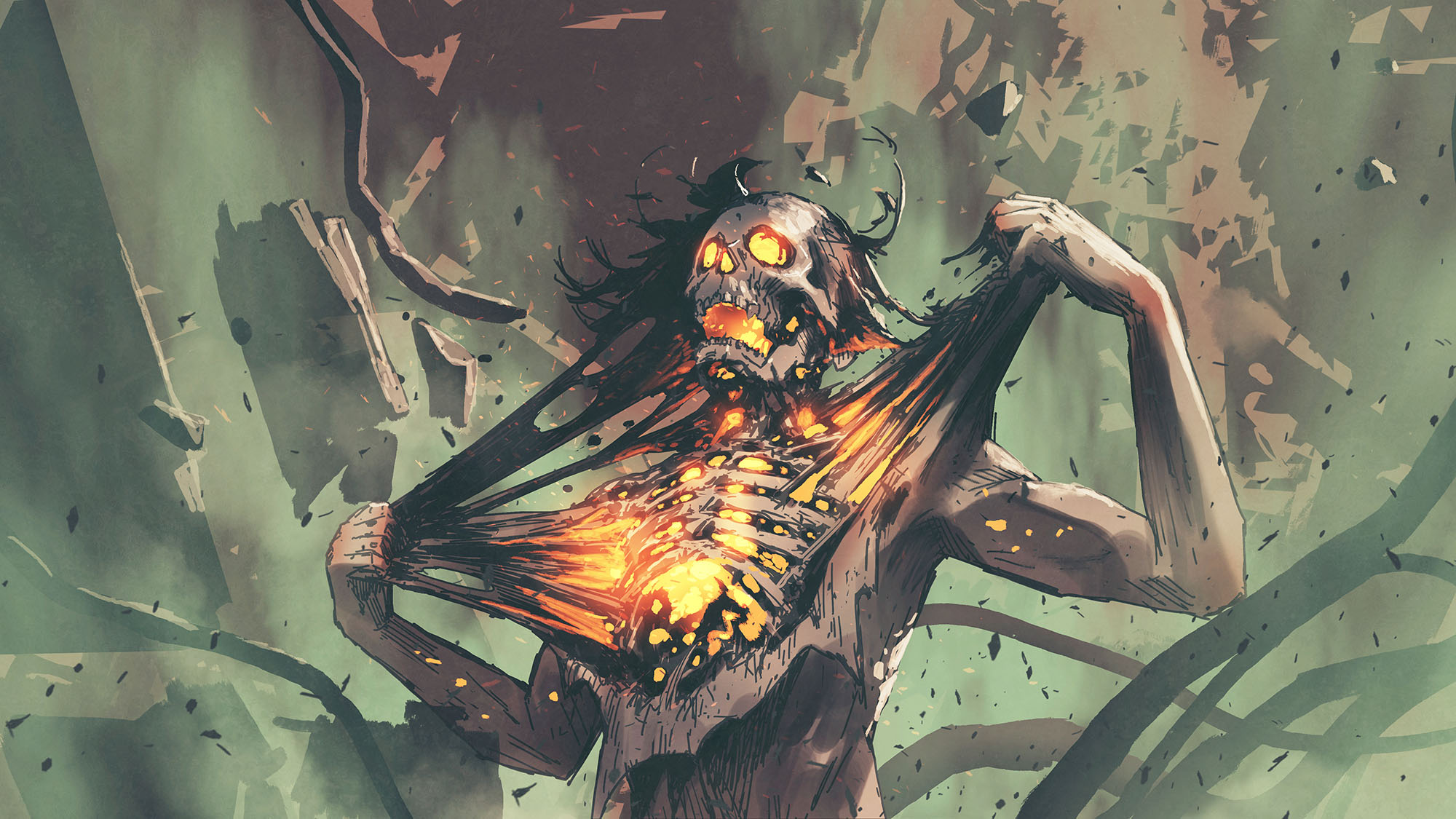DISCUSSING
In the Shadow of the Spire – Session 30D: A Plague of Wraiths
“Tee!”
Turning around at the sound of Dominic’s cry, Tee spotted a lamia-shaped wraith and a minotaur-shaped wraith hovering nearby – held at bay only by the divine energy that Dominic was still channeling through his holy symbol. Tee started to move into a firing position, but as she did the wraiths slipped around the far corner and disappeared into the room with the iron cauldron.
Gathering the others they followed the wraiths into the cauldron room. The two larger wraiths were lurking in the shadows here, along with two smaller ones.
Elestra cursed. “It got all of them? We have to kill them all over again?”
Here’s a thing that I don’t think happens nearly as often as it should in a D&D game.
PCs have a habit of leaving big piles of dead bodies in their wake.
You know who loves big piles of dead bodies?
Necromancers.
(Also strange necromantic miasmas, unfathomable alien spirits from beyond our plane of reality looking for a body to inhabit, toxic chemical spills, experimental zombie viruses, etc. etc. etc.)
The point is that if you’ve got a setting where undead are common + the PCs are constantly killing people, it just makes sense that they’re going to see some familiar faces when the shambling hordes show up.
This isn’t just a great seed for restocking your dungeons or dynamically keeping your sandbox in motion: It personalizes what would otherwise be generic undead encounters, while also getting the players to think about the long-term consequences of their actions. (Do we really want to be leaving all these corpses lying around?)
Once you’re thinking in these terms, of course, it’s not much of a leap to realize that this doesn’t have to be limited to slain enemies. Dead friends and allies are an equally fertile field. (Or, since we’re talking about undead, I suppose it might be whatever the opposite of a fertile field is?) This trope — of a one-time friend or family member returning as an undead monster — is actually quite common in horror films, so it’s surprising we don’t see it more frequently at the game table.
(I suspect this is because published adventures generally have to either eschew this sort of thing or take considerable effort to contrive the outcome: The can’t just say “…and then Lord Harlech comes back from the dead!” because they don’t know whether or not Lord Harlech has died in your campaign. But at your own table, of course, you don’t have to worry about infinite possibilities: You know who ranks among the dead. But I digress.)
Regardless, this technique is a great way to ratchet up the stakes and emotional investment of the players in the bad guy.
There is no greater enemy than one who was once a friend.
Campaign Journal: Session 31A – Running the Campaign: When Players Reincorporate
In the Shadow of the Spire: Index













This is something that I think is really cool about the Exalted setting, that they do lean into this dynamic and give thought to how it would affect the world. It’s mentioned that armies in Creation always include funerary specialists to properly inter the dead lest they rise again after great battles, and one of the Immaculate Dragons is revered for using his power to cremate the trillions of dead left by the overthrow of the Anathema before they could give rise to a plague of hungry ghosts that would have devoured Creation.
So how many sessions until some of the PC’s wanting to weaponize the Wraith Sphere??? Cause I really want to the party take it and put on some catacomb under Rehoban’s Church XD
To Aeshdan, this is why I usually RP that Good Sun Gods require their followers to cremate theyr bodies as funerary rite. It prevent larger scales undead problems.
I ran an entire campaign where undead were the primary villains. After the Bone War and Hundred Years Horror, cremation is the standard practice everywhere. It means that for other campaigns in the same world, I have to lean on wraiths, banshees, ghosts etc rather than zombies wights, and skeletons if I want undead in most places but it’s a twist of the setting that is fun.